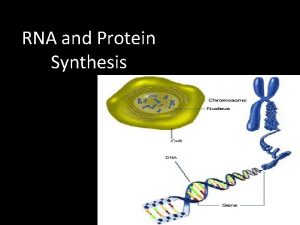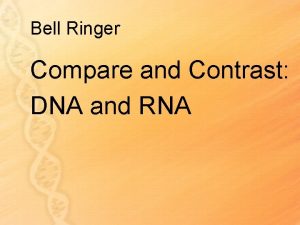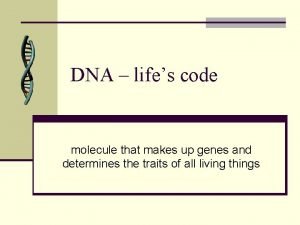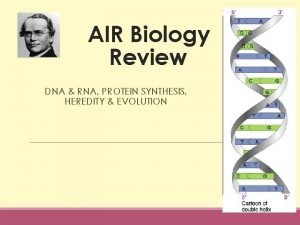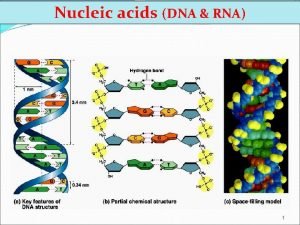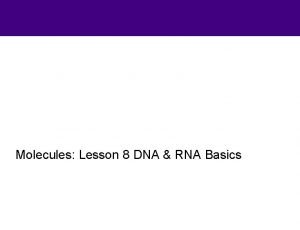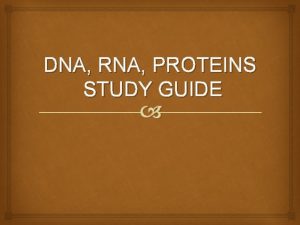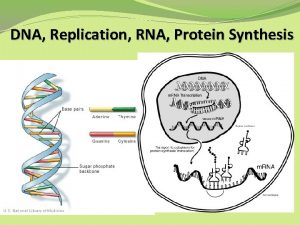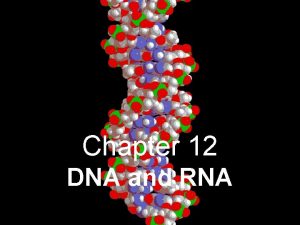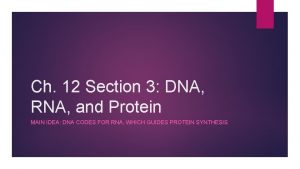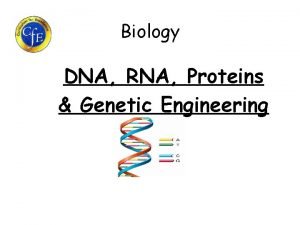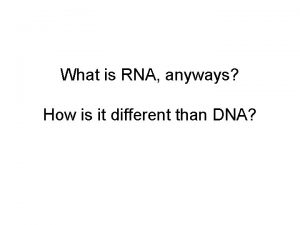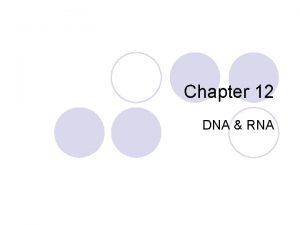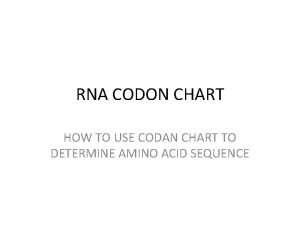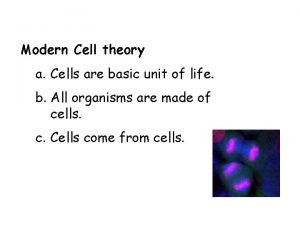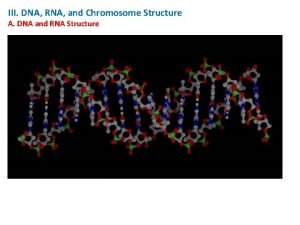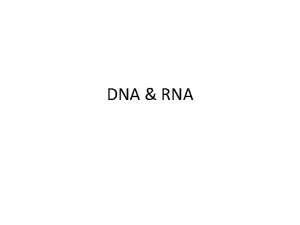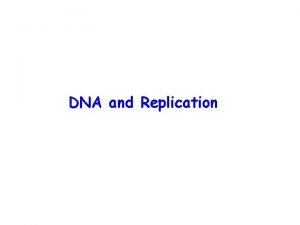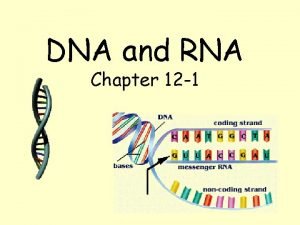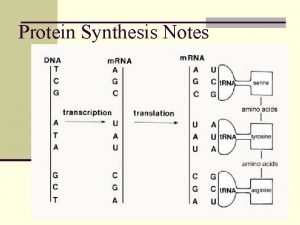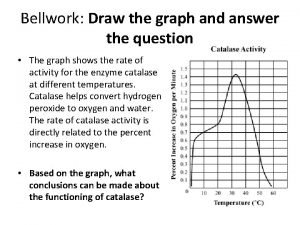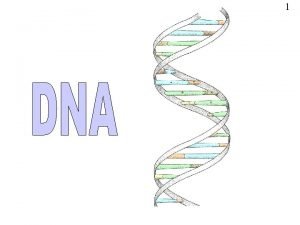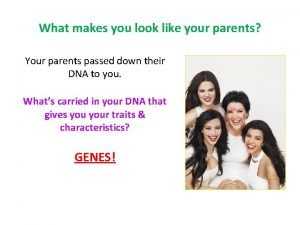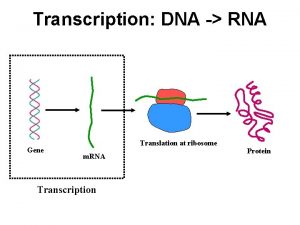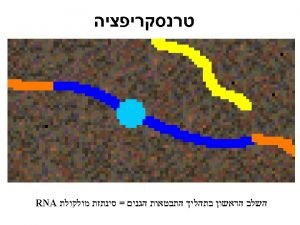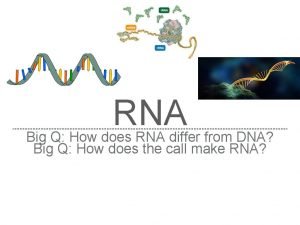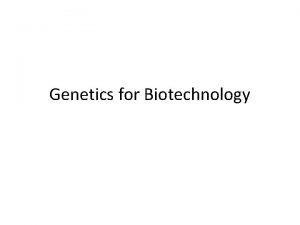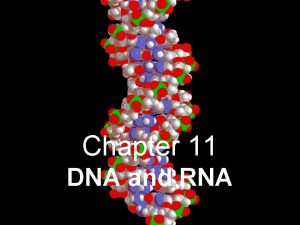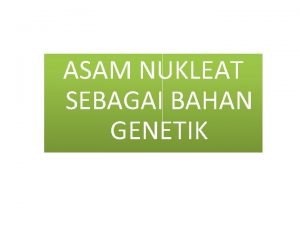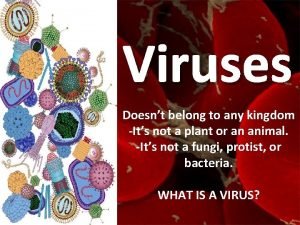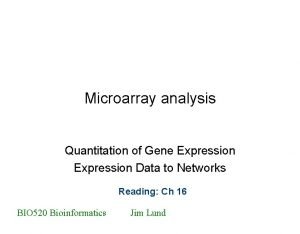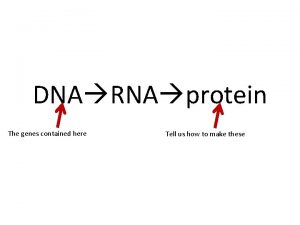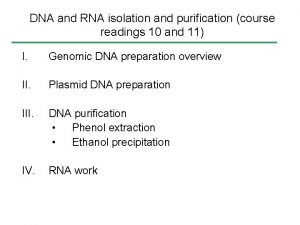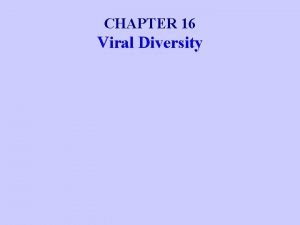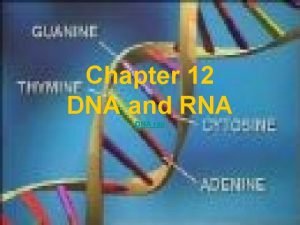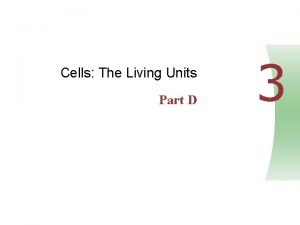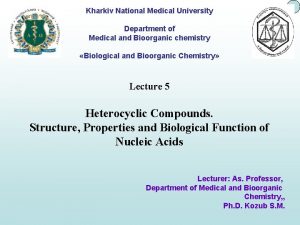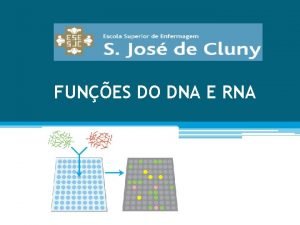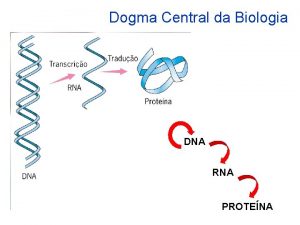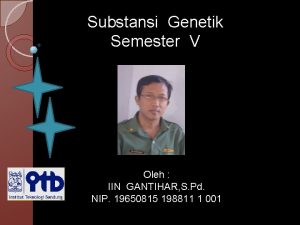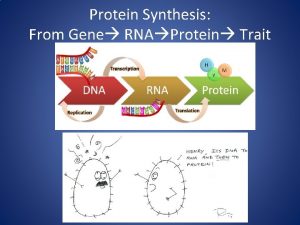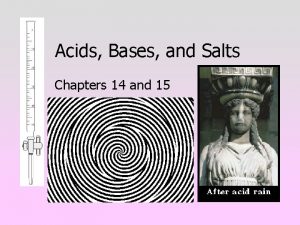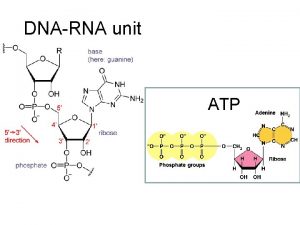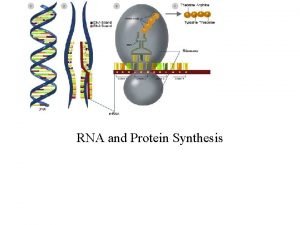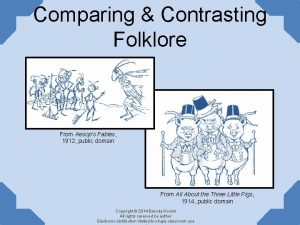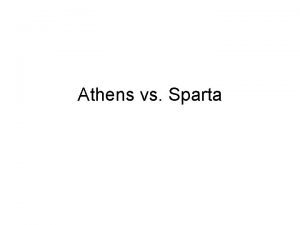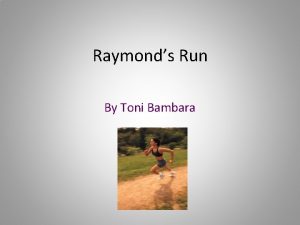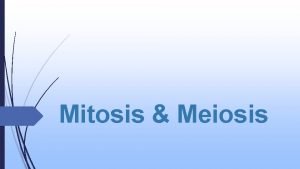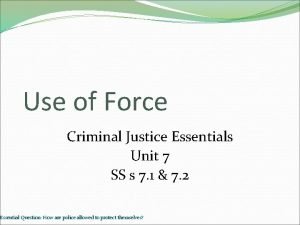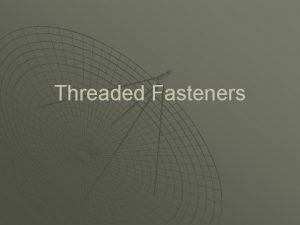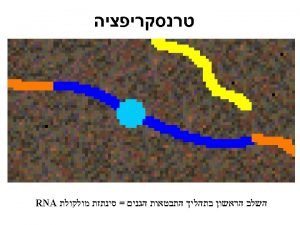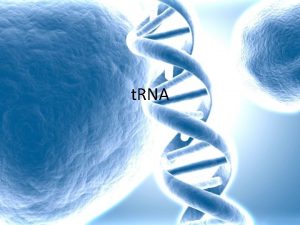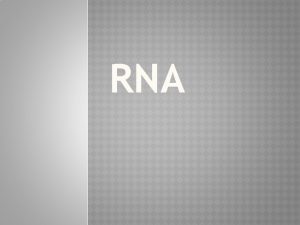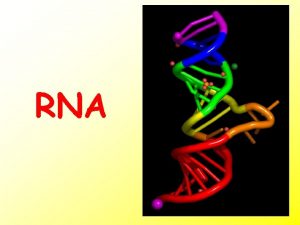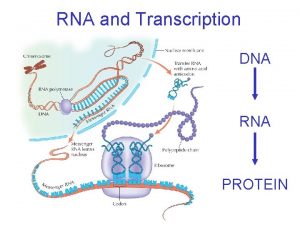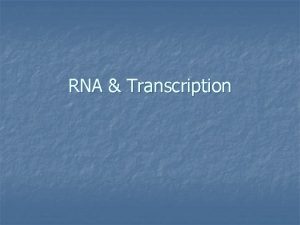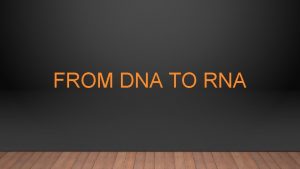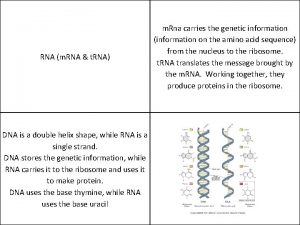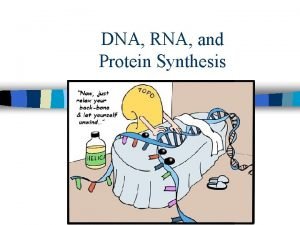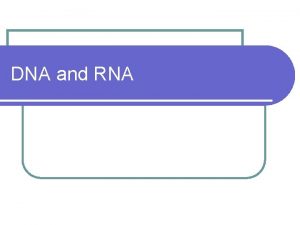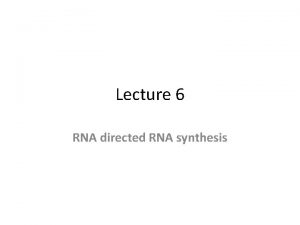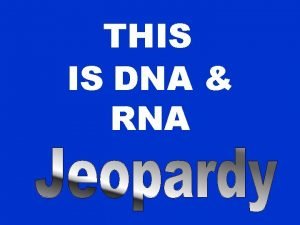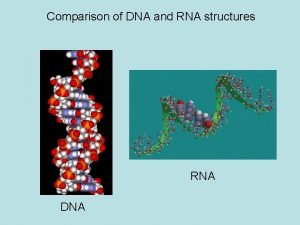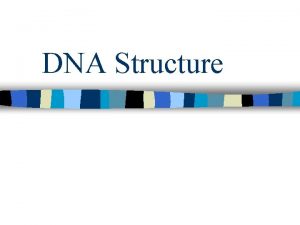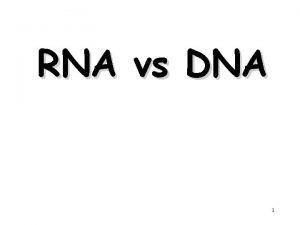Some nomenclature conventions RNAP RNA DNA Similarities and












































































- Slides: 76



Some nomenclature conventions RNAP

RNA DNA


Similarities and Differences Between DNA and RNA • Similar strand structure • Can define a 5’ and 3’ end • 2’ hydroxyl in RNA: causes stability differences) • Uracil in RNA takes the place of Thymine in in DNA






RNA polymerase

Bacterial (Prokaryotic) Transcription • Promoters רצף המכוון את רנא פולימראז תחילת הגן - DNA sequences that guide RNAP to the beginning of a gene (transcription initiation site). • Terminators רצף הגורם לרנא פולימראז להפסיק את תרגום הגן - DNA sequences that specify then termination of RNA synthesis and release of RNAP from the DNA. • RNA Polymerase (RNAP) - Enzyme for synthesis of RNA. • Reaction (ordered series of steps) 1) Initiation. 2) Elongation. 3) Termination.

Other important nomenclature conventions Transcription Initiation Site “Upstream” 5’ 3’ -5 -4 -3 -2 -1 “Downstream” +1 +2 +3 +4 +5 +6 3’ 5’ Direction of transcription Template strand There is no “zero”

RNAP binds a region of DNA from -40 to +20 The sequence of the non-template strand is shown -10 region TTGACA… 16 -19 bp. . . TATAAT “-35” spacer “-10” לאורך ה"ספיסר" יש משמעות – ארוך או קצר יוצר פרומוטר חלש



Sigma factor

Finding and binding the promoter initiation Closed complex formation RNAP bound -40 to +20 Open complex formation RNAP unwinds from 10 to +2 Binding of 1 st NTP Requires high purine [NTP] Addition of next NTPs Dissociation of sigma Requires lower purine [NTPs] After RNA chain is 6 -10 NTPs long

RNA polymerase elongation זיווגי בסיסים 12 - ה"עין" כ


RNA Synthesis is in the 5’ to 3’ Direction DNA strand RNA strand Subsequent hydrolysis of PPi drives the reaction forward OH OH RNA has polarity (5’ phosphate, 3’ hydroxyl)

Rho-Dependent Transcription Termination (depends on a protein AND a DNA sequence) G/C -rich site RNAP slows down Rho helicase catches up Elongating complex is disrupted

Rho-Independent Transcription Termination (depends on DNA sequence - NOT a protein factor) Stem-loop structure

Rho-independent transcription termination • RNAP pauses when it reaches a termination site. • The pause may give the hairpin structure time to fold • The fold disrupts important interactions between the RNAP and its RNA product • The U-rich RNA can dissociate from the template • The complex is now disrupted and elongation is terminated

RNA polymerase






Ways to Regulate Transcription Alternate sigma factor usage: controls selective transcription of entire sets of genes vegetative (principal s) s 70 (16 -19 bp) TTGACA heat shock nitrogen starvation s 32 s 60 +1 TATAAT (5 -9 bp) A +1 CNCTTGA (13 -15 bp) CCCATNT (5 -9 bp) A CTGGNA (6 bp) TTGCA +1 (5 -9 bp) A




Pre-m. RNA


5’UTR 3’UTR







שלבי הטרנסקריפציה Initiation • Elongation • Termination •





YSPTSPS The number of these repeats varies; the mammalian protein contains 52, while the yeast protein contains 26. Serine 5 phosphorylation is confined to promoter regions and is necessary for the initiation of transcription, whereas Serine 2 phosphorylation is important for m. RNA elongation and 3'-end processing


Stages in Initiation of Transcription • Bacterial transcription • Closed complex: holoenzyme+promoter • Open complex (DNA melting, not need ATP) • Abortive transcripton • Productive initiation – Transcribe past +9 – Sigma dissociates • Elongation • Eukaryotic transcription • Preinitiation complex (PIC) assembly • PIC activation (DNA melting, needs ATP) • Abortive transcription • Productive initiation – CTD phosphorylated – Promoter clearance • Elongation

Elongation NTPs

TERMINATION • RNA polymerase meets the terminator • Terminator sequence: AAUAAA • RNA polymerase releases from DNA • Prokaryotes-releases at termination signal • Eukaryotes-releases 10 -35 base pairs after termination signal






transcription


m. RNA מהלך חיי מולקולאת Transcription regulation





a steroid hormone


Gene expression


Basics of cell biology: development Fertilized egg

Basics of cell biology: development Cells differentiation is due to different gene Switches going on and off These cells are different because they express a subset of their 24, 000 genes

m. RNA localization Spector

Promoter Gene To specify a new cell: place it in the right environment or

EGF Hedgehog Wnt Promoter Gene Retinoic acid FGF HGF To specify a new cell: place it in the right environment or Substitute drugs/proteins for environment Mophogens

 Venn diagram of dna and rna
Venn diagram of dna and rna Dna and rna similarities
Dna and rna similarities Chapter 11 dna and genes
Chapter 11 dna and genes Rna transfer
Rna transfer Dna and rna concept map
Dna and rna concept map Venn diagram of transcription and translation
Venn diagram of transcription and translation Dna double helix coloring worksheet answer key
Dna double helix coloring worksheet answer key Rna types
Rna types Dna and rna
Dna and rna Rnabases
Rnabases Dna rna and proteins study guide answers
Dna rna and proteins study guide answers Difference between dna and rna extraction
Difference between dna and rna extraction Dna and rna
Dna and rna Chapter 12 dna and rna
Chapter 12 dna and rna Chapter 12 section 3 dna rna and protein
Chapter 12 section 3 dna rna and protein Rna and protein synthesis study guide
Rna and protein synthesis study guide Dna and rna
Dna and rna Dna vs rna
Dna vs rna Chapter grabber
Chapter grabber Rna codon chart
Rna codon chart Guac wheel
Guac wheel Structure of chromosome
Structure of chromosome 3 componets of dna
3 componets of dna Minor groove
Minor groove On and off
On and off Unlike dna, rna contains
Unlike dna, rna contains Amoeba sisters mutations worksheet
Amoeba sisters mutations worksheet Dna to rna rules
Dna to rna rules Dna vs rna nitrogen bases
Dna vs rna nitrogen bases Dna to protein steps
Dna to protein steps Rna
Rna Rna or dna
Rna or dna Big q
Big q Mutations quiz
Mutations quiz Overview of transcription and translation
Overview of transcription and translation Rna dna
Rna dna Ribosom
Ribosom What kingdom do viruses belong to
What kingdom do viruses belong to Microarray analysis
Microarray analysis Dna rna protein
Dna rna protein Dna rna protein diagram
Dna rna protein diagram Corona virus dna or rna
Corona virus dna or rna Dna rna
Dna rna Dna to rna transcription
Dna to rna transcription Ribonucleotide vs deoxyribonucleotide
Ribonucleotide vs deoxyribonucleotide Nucleic acids
Nucleic acids Why dna is more stable than rna?
Why dna is more stable than rna? Dna vs rna
Dna vs rna Dna e rna
Dna e rna Biologia
Biologia Substansi genetik dna dan rna mempunyai kesamaan yaitu
Substansi genetik dna dan rna mempunyai kesamaan yaitu Dna rna protein trait
Dna rna protein trait Coding dna and non coding dna
Coding dna and non coding dna Contact and non contact forces
Contact and non contact forces Some trust in horses
Some trust in horses Dna polymerase function in dna replication
Dna polymerase function in dna replication Bioflix activity dna replication lagging strand synthesis
Bioflix activity dna replication lagging strand synthesis The principal enzyme involved in dna replication is
The principal enzyme involved in dna replication is They say it only takes a little faith to move a mountain
They say it only takes a little faith to move a mountain Sometimes you win some sometimes you lose some
Sometimes you win some sometimes you lose some Ice cream countable or uncountable noun
Ice cream countable or uncountable noun Some say the world will end in fire some say in ice
Some say the world will end in fire some say in ice Some say the world will end in fire some say in ice
Some say the world will end in fire some say in ice 7 strong acid
7 strong acid Section 12 3 rna and protein synthesis answers
Section 12 3 rna and protein synthesis answers Ribosomal rna
Ribosomal rna Section 12 3 rna and protein synthesis
Section 12 3 rna and protein synthesis Is there a similarity between the parents and offspring
Is there a similarity between the parents and offspring Career stage 1 or beginning teachers
Career stage 1 or beginning teachers Comparing fables
Comparing fables Athens vs sparta differences
Athens vs sparta differences Raymond's run text dependent questions and answers
Raymond's run text dependent questions and answers Wid wad
Wid wad Venn diagram about mitosis and meiosis
Venn diagram about mitosis and meiosis Taser 7 nomenclature
Taser 7 nomenclature Nomenclature of bolts
Nomenclature of bolts Oblique cutting example
Oblique cutting example

